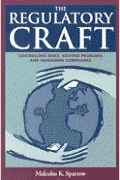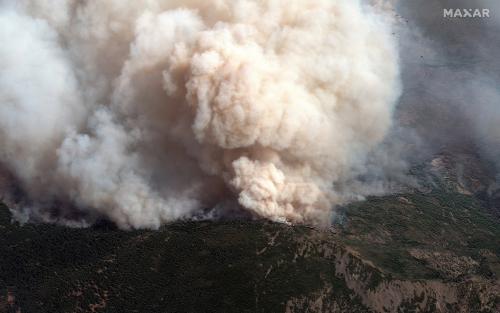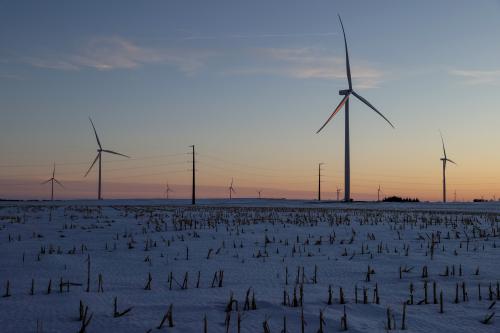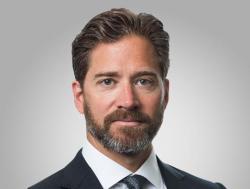While Democrats are celebrating Joe Biden’s victory, the 2021 legislative agenda faces stiff headwinds. As the incoming administration fills key appointments on foreign and economic policy, it is clear that the country has never had so many people in the top jobs who are so well-versed in climate policy. And as the politics of the country get even more polarized, never has a team with such grand ambitions faced so many constraints in what they can do.
When Biden takes office in January, he will likely be the first new president since George H W Bush in 1989 to move into the White House without his party controlling both houses of Congress. Even if the Democrats do take both open seats in Georgia, the swing votes in the Senate will be centrists not keen to rock the status quo too much. That’s trimmed expectations for a sweeping legislative agenda, such as for a Green New Deal, and likely puts heavier emphasis on a suite of administrative actions.
Most regulatory discussions about climate change tend to focus on places that have direct control over emissions and technology — for example, the Environmental Protection Agency, the Department of Energy, and the Federal Energy Regulatory Commission. But the most profound regulatory shifts might be those taking shape, quickly, in the unlikeliest of places: financial markets.
Over the last year alone, there has been a sea of change in how some American financial regulators have been thinking about climate change. At root, the concern is that today’s markets are filled with hidden risks and instabilities because investors and regulators don’t have reliable information about how climate change might affect the value of the financial instruments they trade and oversee.
These risks come in two flavors. One is “transition”: the risk that financial instruments could revalue quickly as the economy shifts away from today’s polluting activities to greener industries of the future. The other is “physical”: that impacts of climate change, such as wildfires or hurricanes, could impair or erase valuable assets such as roads, buildings, and public transport systems. Particularly striking, as we found in our earlier research, are the risks that whole communities could suffer as their tax bases erode from loss of public infrastructure and out-migration — a prospect that very few municipal bond issuers grapple with at present.
European regulators — especially in the United Kingdom and France — have been way ahead of the U.S. for years when it comes to addressing these risks. Starting around 2015, central bankers and securities regulators began a sustained effort to study and respond to these climate risks, anchored in concern that poor disclosure would cause financial instabilities. (Mark Carney, then head of the Bank of England, gave a notable speech on the problem, and since then the idea has spread like wildfire.)
Quickly, in Europe, disclosure rules have changed, as has financial oversight in some countries — including new climate-related stress tests. U.S. policymakers made no such shift, but private industry has struggled to fill in the gaps, such as developing disclosure frameworks that focus on environmental, social, and governance factors under the commonly used moniker of “ESG.” Indeed, so many different private standards have been created that the whole ESG business is like the wild west. This explosion of competing standards and frameworks shows that the private sector knows it has a problem. What it lacked was a strong regulatory system to point the way forward.
U.S. regulators watched closely but, under the Trumpian thumb, couldn’t do much. They gave speeches about the problem and studied the risks, but in an administration that has variously called climate change a “hoax” and, in its twilight months, even moved to exclude consideration of ESG factors in retirement portfolios, it is no wonder that little serious policy action followed. But that didn’t stop the experts from doing their homework, and from private industry moving forward even in the absence of regulatory framework and guidance by recognizing the importance of ESG factors (or climate disclosure specifically) to their stakeholders.
Just this month under the leadership of Chairman Jerome Powell, the U.S. Federal Reserve announced its application for membership to the Network for Greening the Financial System, a leading group of international central banks focused on the financial risks of climate change. In tandem, Fed Governor Lael Brainerd said: “ It is vitally important to move from the recognition that climate change poses significant financial stability risks to the stage where the quantitative implications of those risks are appropriately assessed and addressed.” The Fed’s most recent Financial Stability Report also discussed, for the first time in the institution’s history, the systemic risks presented by climate change. Even better, most of the discussion focused on how climate change could impair the value of assets in the country — for example, real estate and related commercial and public infrastructure investments. If coastal flooding or wildfires destroys these assets — and if insurance coverage is allowed to respond by pricing the risks accordingly — then massive devaluation could follow.
What is happening in the U.S. is notable, and with a push from the Biden administration — including through new appointments — the impacts on the flow of capital and market oversight could be substantial.
The swiftest changes could be evident at the Securities and Exchange Commission (SEC) where many elements of better climate-related regulation are emerging as well. For the SEC, the key questions will focus, initially, on disclosure. Today, while firms know they need to disclose material risks, firms have no clear guidance on what to disclose with regards to climate risks, with many herds following uncertain leaders. Our empirical research on disclosure shows that, in equities, a growing number of firms say a lot (of mixed quality) about their exposure to transition risk. Managers of traded firms say a lot less, however, about the physical risks of climate change. In other parts of the market, notably issuance of municipal debt, there is no relationship between exposure to the impacts of climate change — as best we can fathom — and what issuers tell the market.
Better rules can help fix this. The votes for that kind of disclosure haven’t been possible at Trump’s SEC, but that could change very quickly under Biden.
A lot remains to be done, to be sure. But with the right signals from the White House, U.S. central bankers and regulators will quickly link with their European counterparts who are already developing and applying tools such as climate-focused stress tests to better understand the risks posed to their financial markets. The U.S. could add a lot to this discussion, not least because the American dialogue, rightly, is already focused more on the physical risks of climate change. The U.S. also has arguably more at stake given the country’s outsized volume of real and financial assets at risk from climate hazards. It is possible that the European emphasis, from the start, on transition risks has shaped a debate about climate change and financial markets that has been focused on the wrong questions. In fact, the markets already know a lot about transition risk — and, most likely, the markets there are working. But on physical risks they are flying blind, and that’s the big worry.
Government in the U.S. remains divided, especially on topics like climate change. A big concern for the incoming Biden administration is that whatever they do through administrative action can be reversed, to some degree, by future administrations that might be less focused on the climate crisis. After all, the Trump team reversed many of the Obama-era administrative and executive actions related to climate change, including membership in the Paris Agreement, in just two or three years.
In contrast to the whims of political administrations, the rules that affect the allocation of capital are different. Once the markets get credible information on risk the shift in capital will follow (and to some degree, it has already begun). The durable directionality that results from these capital shifts is a huge opportunity for an otherwise hobbled policy agenda for the Biden administration. It will, fortuitously, also have a big benefit for the planet and for improving the nation’s resilience to the rapidly onsetting impacts of climate change.











Commentary
Making climate policy stick
December 9, 2020